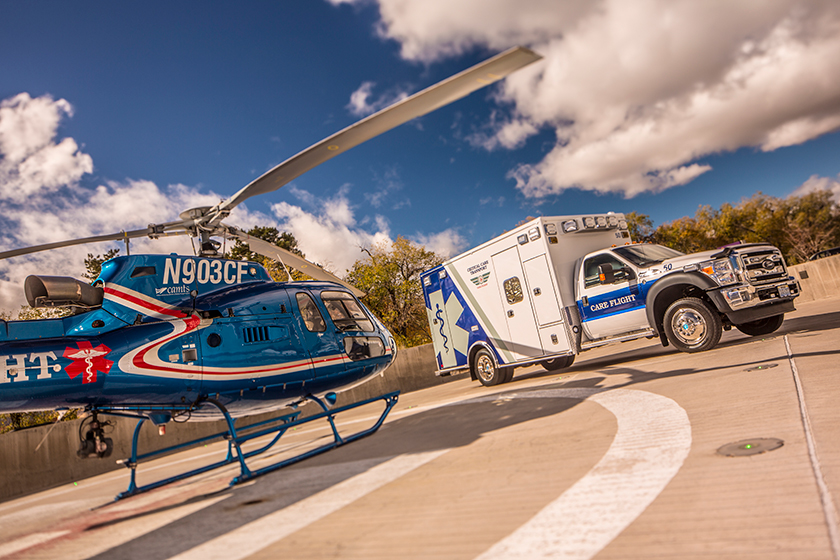Care Flight Ground Recognized for its Contributions to Quincy’s Designation as a Heart Safe Community

On Tuesday, May 2, through a proclamation by The Plumas County Board of Supervisors, Care Flight Ground will be recognized for its leadership with the town’s Heart Safe Community movement. A Heart Safe Community designation indicates that a community, region or state has established community-wide protocols and safeguards intended to give victims of sudden cardiac arrest the best chance at survival.
“Care Flight is thrilled with the community-wide participation on this initiative,” said Dean Dow, president and CEO, REMSA/Care Flight. “This designation reassures the citizens of Quincy, that in their town, many local businesses, the media, schools, emergency medical services, law enforcement, fire departments and healthcare providers have come together to improve the standard of care related to heart attacks.”
In the United States, more than 400,000 people die from out-of-hospital sudden cardiac arrest every year. In rural communities like Plumas County the survival rate (as defined by walking out of the hospital, post-treatment) can be as low as single digit percentages.
“When Care Flight Ground launched its partnership with Plumas District Hospital last year, we agreed that improving and standardizing the care for sudden cardiac arrest was an immediate need,” said Dow. “Care Flight Ground’s EMS Supervisor, Same Blesse, has championed this effort and galvanized the community around this initiative.”
Under Care Flight’s leadership, the town of Quincy committed to improving outcomes by expanding awareness through local media campaigns, hosting free or low cost CPR classes, and expanding availability and accessibility to life-saving AED machines. Prior to the Heart Safe Community program, Plumas County proactively placed AEDs in all public buildings. The number of AEDs grew during the Heart Safe Community initiative through donations and purchases from private businesses. In the last year, Care Flight purchased and donated six AED units.
The establishment of specific treatment protocols was a key component for emergency medical services (EMS). Two key elements to the EMS protocols include high-performance CPR and not moving the patient until a pulse is detected.
“It’s very difficult to administer effective CPR when a patient is being moved,” said Blesse. “To make sure we offer patients the best chance at survival, EMS providers throughout the area have been trained to continue treating a patient at the scene until they are stable enough to be transported.”
This training includes interpreting EKGs, continuing CPR for long periods of time and working proactively with critical care transport options. These options include Care Flight’s ground ambulance or helicopter; both ensure timely transport to a higher level of care.
The responsibility to track and report outcomes is part of earning this designation. While Quincy (due to small population size) is currently waitlisted on acceptance into the CARES (Cardiac Arrest Registry to Enhance Survival) registry, they use the same tracking form and reporting process. Prior to participating in the Heart Safe Community program, Care Flight could not find a single cardiac arrest save in Quincy in the preceding 10 years. Since the initiative began, there have been four events that meet the criteria and from that, a 50 percent save rate has been achieved so far.
